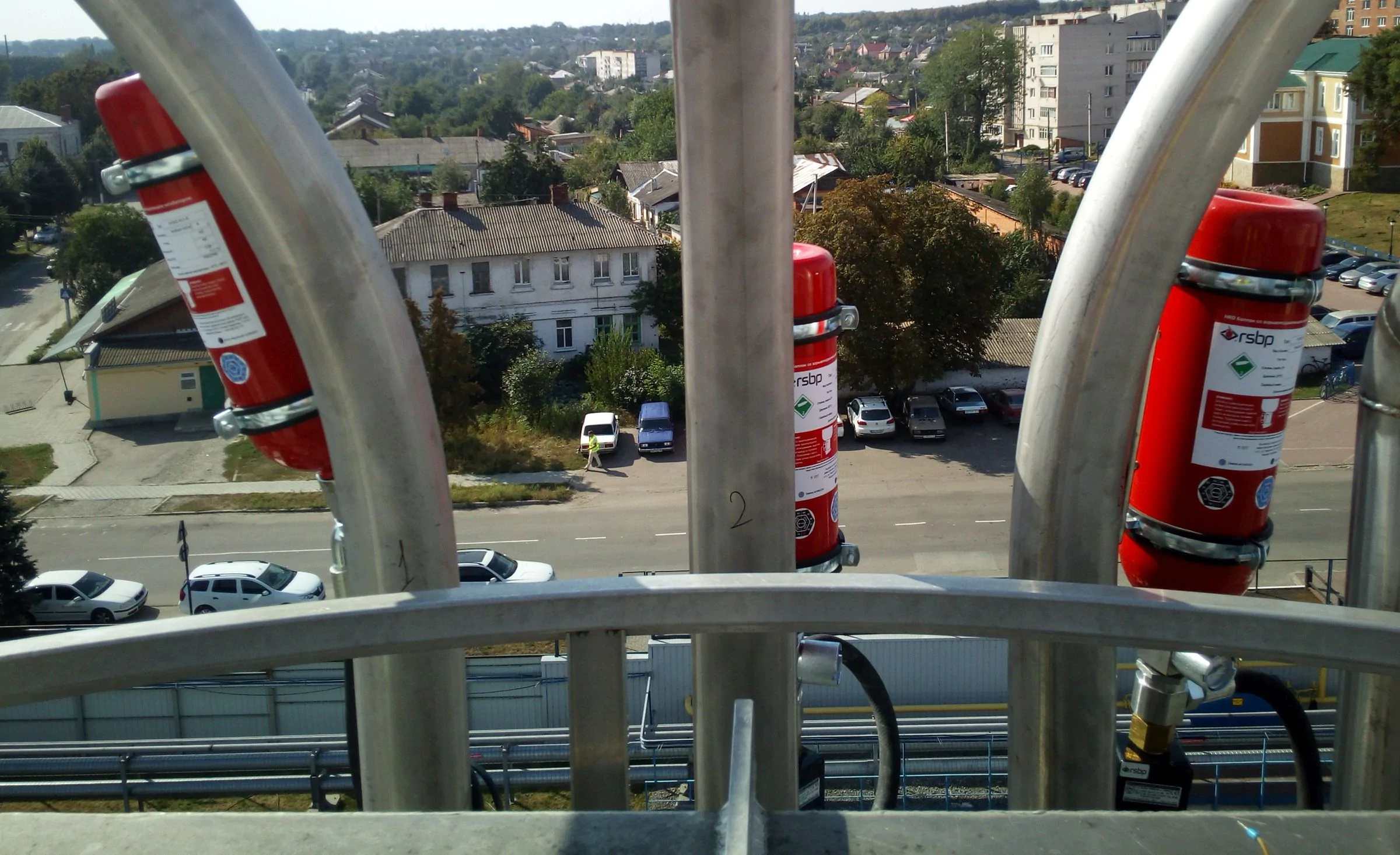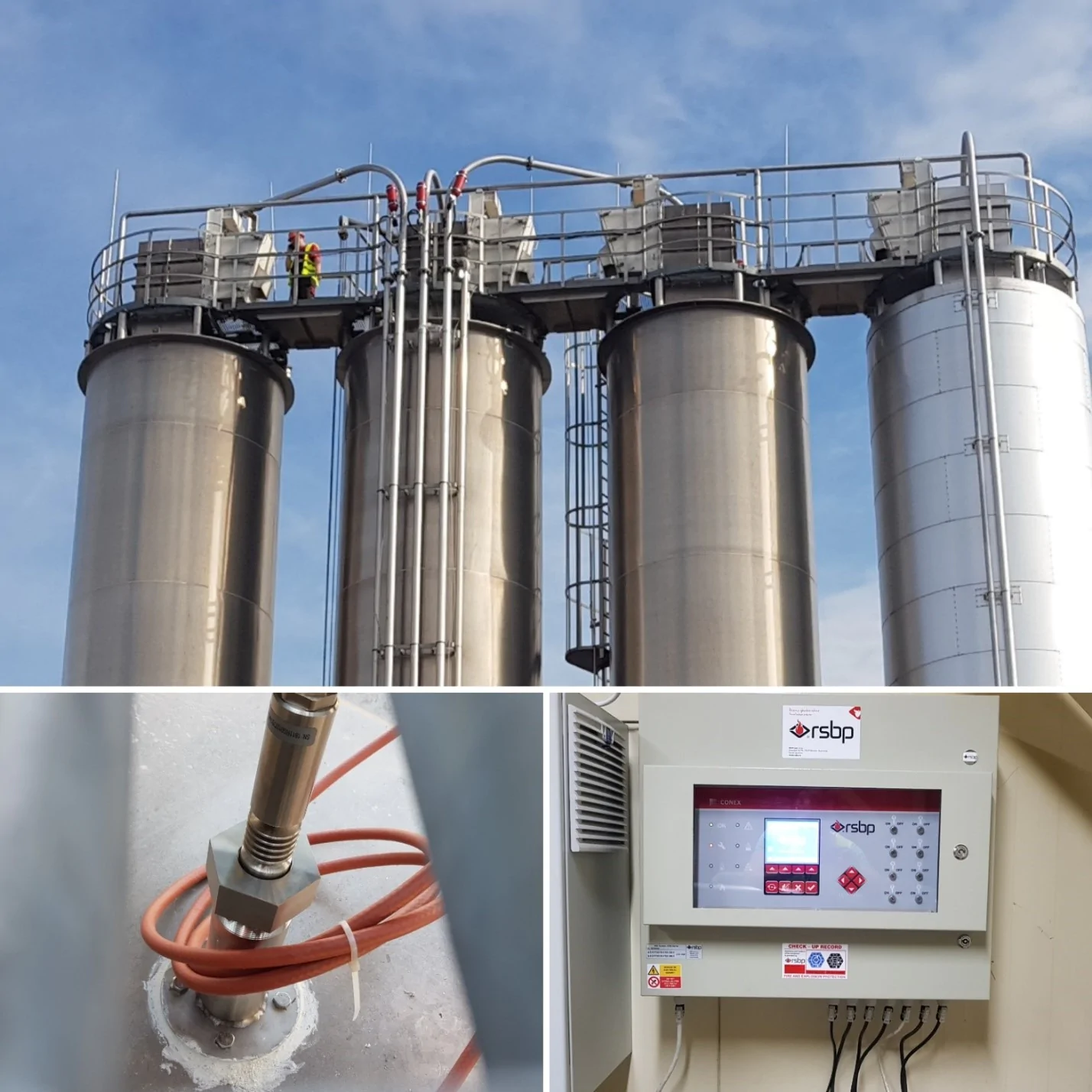Problem
Flour is not explosive during storage. However, during transport, loading and unloading it forms a fine flammable dust. The smaller its particles, the greater its explosive properties.
In combination with oxygen in the air, flour dust forms combustible dust-air mixtures. In certain concentrations it is combustible in contact with ignition sources (sparks, static electricity, hot surfaces). Because of the high starch content in flour dust, combustion is accompanied by a detonation.
A dust explosion rarely occurs alone. The shock wave causes the dust to disperse into the air and this leads to a series of secondary explosions. These are what cause considerable damage in silo accidents.
Statistics show that 400-500 explosions occur every year at grain processing facilities around the world. Of these, grain elevators account for 27 % and flour mills for 20 %. Primary explosions most often occur in equipment - 50 % - and in containers (silos and bunkers) - over 40 %.
ATEX safety standards prescribe the installation of explosion protection in storage and processing plants.
Task
Providing explosion protection for the pneumatic conduit for transferring the flour to the silo. The site is classified as ZONE_20 in terms of explosion hazard.
For reference. Explosive Zone 20 is an area in which combustible dust in the form of a cloud is present continuously or partially during normal operation of equipment, in an amount capable of producing a concentration sufficient to produce an explosion of combustible or flammable dust in mixtures with air; and/or where layers of dust of arbitrary or excessive thickness may form. This may be clouds within the dust content area where dust can form explosive mixtures frequently or for long periods of time.
Solution
We carried out the following work for the customer:
- Determination of the explosion protection method, taking into account the characteristics of the organic dust generated on site;
- Selection and supply of the necessary equipment from the manufacturer;
- Installation and commissioning of the system in cooperation with the manufacturer of explosion protection devices RSBP spol. s r.o.
All work was carried out in accordance with ATEX standards.
The result
We have installed and commissioned the HRD Barrier active explosion cut-off system. It consists of elements:
- DetEx pressure sensors;
- HRD cylinders with explosive suppressant;
- Control system - CONEX controllers.
Active explosion protection HRD is applicable where there are people working in the vicinity of the structure to be protected and there are adjacent pieces of equipment.
System sensors react to an incipient explosion and transmit a signal to the controllers. These command the extinguishing agent canisters to be triggered. Special geometry nozzles ensure that the inert agent is sprayed over the entire surface of the hazardous area, even complex geometries such as pneumatic conduits.
Benefits of the HRD barrier:
- Suppresses an explosion in a time of no more than 60 ms. Shockwave and dust combustion products do not escape outside the equipment.
- Installation consists of only two steps, according to ready-made drawing kits and installation manual.
- Easy to maintain - only visual inspection of cleanliness and integrity of components, monthly pressure checks on HRD cylinders are required.
- Installed without altering the pneumatic conduit design.
- Can be used in open areas and confined spaces.
- The active components (HRD cylinders) are easy to replace after use.
In spite of all its advantages the HRD barrier is not applicable in all installations. Each explosion protection project must be developed individually, taking into account the prevailing operating conditions..

